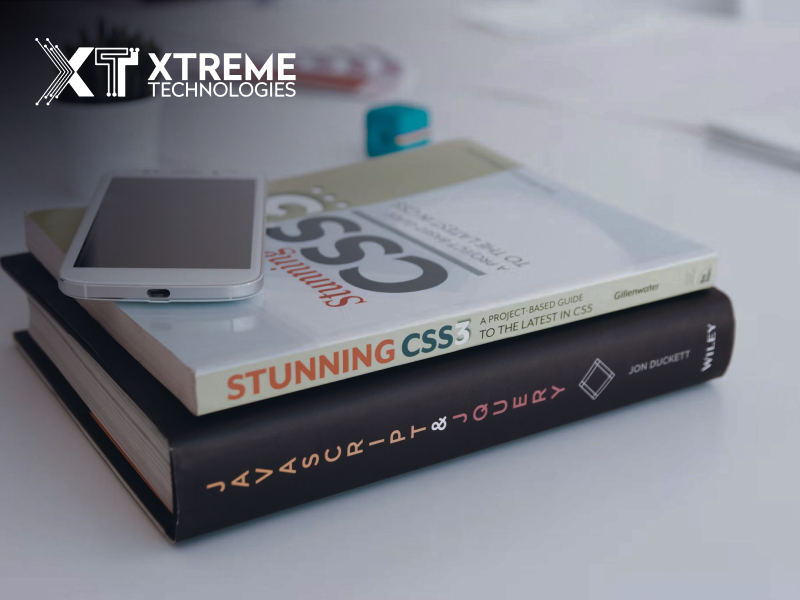
Effective CSS Rules for SEO – Need to Know More
Published on: July 05, 2023
CSS is an essential component of SEO, helping to improve a site's visibility and ranking in search engines. By using semantic HTML tags and incorporating keywords into CSS selectors, web developers can create a more structured and meaningful page structure that is easier for search engines to read.
What are the effective CSS rules for SEO? Internal CSS is defined within the head> section of an HTML page with a link rel-tag. Using this method can help reduce the size of an HTML file and improve the page's performance, as measured by Core Web Vitals (CWV).
Using CSS helps to create clean and organized HTML code on a website. It also allows web developers to use semantic HTML tags and incorporate keywords into their CSS selectors. This improves a website's search engine ranking by making it more relevant to users' searches.
 When writing your CSS, separate each property and value pair on a new line. This will make the code easier to read for future web developers. Adding comments between logical sections of the CSS file is also a good idea. This will help you locate different sections of the code quickly when scanning it and make it easy to find what you need if you come back to work on the file after a break.
When creating anchor text for your website, choosing a keyword relevant to the page you are linking to is essential. This will help searchers, and Google understand the link and how it relates to the rest of your site's content. You should also avoid using generic anchor text, such as "page," "article," or "click here." Using these keywords will not be effective for improving your site's SEO.
The content of a website is critical to SEO. This includes on-site content, such as title tags and meta descriptions, and off-site content, such as inbound links and other external content. SEO best practices for on-site content include conducting keyword research, creating high-quality and original content, using headers and sub-headers, including images with alt text, and utilizing appropriate internal linking.
When writing your CSS, separate each property and value pair on a new line. This will make the code easier to read for future web developers. Adding comments between logical sections of the CSS file is also a good idea. This will help you locate different sections of the code quickly when scanning it and make it easy to find what you need if you come back to work on the file after a break.
When creating anchor text for your website, choosing a keyword relevant to the page you are linking to is essential. This will help searchers, and Google understand the link and how it relates to the rest of your site's content. You should also avoid using generic anchor text, such as "page," "article," or "click here." Using these keywords will not be effective for improving your site's SEO.
The content of a website is critical to SEO. This includes on-site content, such as title tags and meta descriptions, and off-site content, such as inbound links and other external content. SEO best practices for on-site content include conducting keyword research, creating high-quality and original content, using headers and sub-headers, including images with alt text, and utilizing appropriate internal linking.
 Moreover, the content of a page must be relevant to its overall theme and topic. This is especially important for off-site SEO, where the quality of outbound links is an essential factor in a site's overall ranking.
Keeping the CSS rules clean helps search engines understand the content of your website. It also makes it easier for them to crawl and index your pages.
Semantic markup is a good practice and essential for web designers working on SEO-friendly sites.
Moreover, the content of a page must be relevant to its overall theme and topic. This is especially important for off-site SEO, where the quality of outbound links is an essential factor in a site's overall ranking.
Keeping the CSS rules clean helps search engines understand the content of your website. It also makes it easier for them to crawl and index your pages.
Semantic markup is a good practice and essential for web designers working on SEO-friendly sites.
 You should also try to avoid duplicating rules or creating rule sets that aren't necessary for the specific design of your site. If you use a CSS framework, review the documentation to ensure you're not unintentionally duplicating existing rules. If you're working with a team, it's a good idea to establish a coding style guide that all members can agree on. This will prevent confusion and help everyone write more efficient code.
Finally, it's a good idea to use shorthand properties wherever possible. This is one of the easiest ways to reduce file size and coding time. Consider adding them to your toolkit if you're not using them already.
Many of us are now conducting searches on mobile devices, and search engines consider that when ranking websites. That's why ensuring your site is mobile-friendly and provides an optimal user experience on smartphones, tablets, and laptops is vital. To do this, you should use responsive web design and ensure your pages are optimized for mobile devices.
This is especially important if your website has dynamic serving or separate URLs for desktop and mobile versions of your pages. When Google crawls your website, it checks whether each page is mobile-friendly and uses the appropriate code.
It's also essential to ensure your mobile pages include relevant on-page factors like title tags and meta descriptions. This way, Google can properly index your website's pages and rank them in search results. Additionally, you should use a canonical tag to signal to Google that your desktop and mobile pages are identical.
Incorporating CSS into your website is essential for SEO because it can help improve your web pages' structure and relevance. To do this, it is essential to keep your CSS code readable.
In addition, it is essential to use semantic HTML markup when constructing your web pages. It will also help to improve the user experience and site navigation.
It is also essential to use appropriate anchor text when creating your links. This will help users and Google navigate your site more efficiently and ensure that your internal links are relevant to the context of the page you are linking to.
An excellent way to do this is to use a tool like SearchAtlas to check your web pages for coding errors. This can be a common cause of slow loading times. By identifying any coding errors, you can correct them and improve your site's performance.
You should also try to avoid duplicating rules or creating rule sets that aren't necessary for the specific design of your site. If you use a CSS framework, review the documentation to ensure you're not unintentionally duplicating existing rules. If you're working with a team, it's a good idea to establish a coding style guide that all members can agree on. This will prevent confusion and help everyone write more efficient code.
Finally, it's a good idea to use shorthand properties wherever possible. This is one of the easiest ways to reduce file size and coding time. Consider adding them to your toolkit if you're not using them already.
Many of us are now conducting searches on mobile devices, and search engines consider that when ranking websites. That's why ensuring your site is mobile-friendly and provides an optimal user experience on smartphones, tablets, and laptops is vital. To do this, you should use responsive web design and ensure your pages are optimized for mobile devices.
This is especially important if your website has dynamic serving or separate URLs for desktop and mobile versions of your pages. When Google crawls your website, it checks whether each page is mobile-friendly and uses the appropriate code.
It's also essential to ensure your mobile pages include relevant on-page factors like title tags and meta descriptions. This way, Google can properly index your website's pages and rank them in search results. Additionally, you should use a canonical tag to signal to Google that your desktop and mobile pages are identical.
Incorporating CSS into your website is essential for SEO because it can help improve your web pages' structure and relevance. To do this, it is essential to keep your CSS code readable.
In addition, it is essential to use semantic HTML markup when constructing your web pages. It will also help to improve the user experience and site navigation.
It is also essential to use appropriate anchor text when creating your links. This will help users and Google navigate your site more efficiently and ensure that your internal links are relevant to the context of the page you are linking to.
An excellent way to do this is to use a tool like SearchAtlas to check your web pages for coding errors. This can be a common cause of slow loading times. By identifying any coding errors, you can correct them and improve your site's performance.
Conclusion
It's also important to remember that search engines reward websites that provide users with relevant and up-to-date content. Therefore, updating and refreshing a website's content frequently is essential. This can be done by implementing a site-wide navigation structure and linking to relevant pages throughout a website. It's also essential to avoid over-linking, which can decrease a site's rankings. Finally, it's essential to use proper anchor text when creating internal and external links.
Read Also: White Label SEO – Help Business Owners to Save Money
Another way to keep your CSS code readable is to use a separate file for styling your website’s pages. This will prevent the need to load your style sheets each time a new page is visited. This can save a lot of bandwidth and improve the user experience. It is also recommended to enable caching for both CSS and JS files. This will reduce the amount of data that needs to be downloaded each time a page is visited and can dramatically increase page loading speeds.
FAQs
Q1) How can CSS improve SEO?
CSS can improve SEO in several ways. By using CSS to organize and structure content, search engines can better understand the relevance and importance of different elements on a web page. Additionally, CSS allows for faster page loading times, positively impacting SEO rankings. It also enables responsive design, making websites more mobile-friendly, a critical ranking factor for search engines.
Q2) Does CSS impact website speed and SEO?
Yes, CSS can impact website speed and SEO. The page loading speed can be improved by optimizing CSS files through minification, combining multiple CSS files, and reducing unnecessary code. Faster-loading websites have better SEO rankings; site speed is crucial for search engines.
Q3) Is it necessary to have separate CSS files for SEO purposes?
It is not necessary to have separate CSS files solely for SEO purposes. However, organizing CSS code into separate files and using external CSS files (linked in the HTML) can improve website performance and maintenance. This indirectly benefits SEO by ensuring faster loading times, easy code management, and efficient caching of CSS resources by browsers.
Q4) Can CSS impact website accessibility and SEO?
Yes, CSS can impact website accessibility and SEO. By using CSS to create well-structured, readable, and visually appealing web pages, the user experience is enhanced. This includes appropriate color contrasts, precise font sizes, and responsive device design. Improved accessibility leads to better user engagement, lower bounce rates, and higher SEO rankings.
Q5) Should CSS be placed in the HTML head or body section for better SEO?
CSS should be placed in the HTML head section for better SEO. Placing CSS in the head section ensures that it is loaded and parsed before the page's content, allowing search engine crawlers to understand the structure and presentation of the page more effectively. However, it's important to note that modern web development practices often involve using external CSS files linked in the head section.
Tags In
Abdullah Haroon
Abdullah is COO of Xtreme Technologies. He is Interested about Business, and Technology.

 When writing your CSS, separate each property and value pair on a new line. This will make the code easier to read for future web developers. Adding comments between logical sections of the CSS file is also a good idea. This will help you locate different sections of the code quickly when scanning it and make it easy to find what you need if you come back to work on the file after a break.
When creating anchor text for your website, choosing a keyword relevant to the page you are linking to is essential. This will help searchers, and Google understand the link and how it relates to the rest of your site's content. You should also avoid using generic anchor text, such as "page," "article," or "click here." Using these keywords will not be effective for improving your site's SEO.
When writing your CSS, separate each property and value pair on a new line. This will make the code easier to read for future web developers. Adding comments between logical sections of the CSS file is also a good idea. This will help you locate different sections of the code quickly when scanning it and make it easy to find what you need if you come back to work on the file after a break.
When creating anchor text for your website, choosing a keyword relevant to the page you are linking to is essential. This will help searchers, and Google understand the link and how it relates to the rest of your site's content. You should also avoid using generic anchor text, such as "page," "article," or "click here." Using these keywords will not be effective for improving your site's SEO.
 Moreover, the content of a page must be relevant to its overall theme and topic. This is especially important for off-site SEO, where the quality of outbound links is an essential factor in a site's overall ranking.
Moreover, the content of a page must be relevant to its overall theme and topic. This is especially important for off-site SEO, where the quality of outbound links is an essential factor in a site's overall ranking.
 You should also try to avoid duplicating rules or creating rule sets that aren't necessary for the specific design of your site. If you use a CSS framework, review the documentation to ensure you're not unintentionally duplicating existing rules. If you're working with a team, it's a good idea to establish a coding style guide that all members can agree on. This will prevent confusion and help everyone write more efficient code.
Finally, it's a good idea to use shorthand properties wherever possible. This is one of the easiest ways to reduce file size and coding time. Consider adding them to your toolkit if you're not using them already.
You should also try to avoid duplicating rules or creating rule sets that aren't necessary for the specific design of your site. If you use a CSS framework, review the documentation to ensure you're not unintentionally duplicating existing rules. If you're working with a team, it's a good idea to establish a coding style guide that all members can agree on. This will prevent confusion and help everyone write more efficient code.
Finally, it's a good idea to use shorthand properties wherever possible. This is one of the easiest ways to reduce file size and coding time. Consider adding them to your toolkit if you're not using them already.






Recent Comments